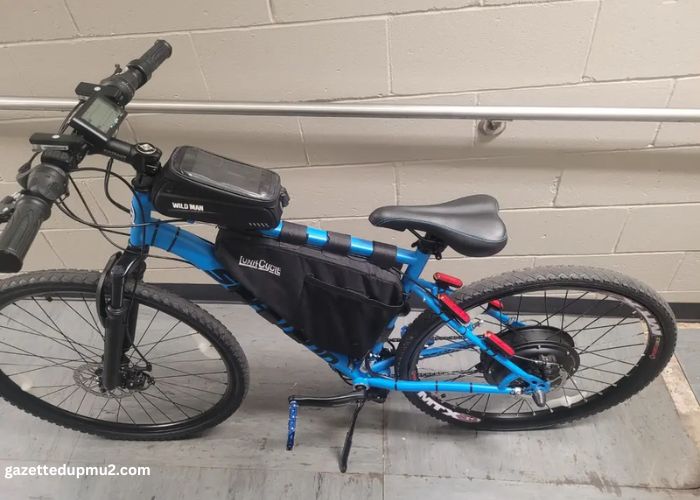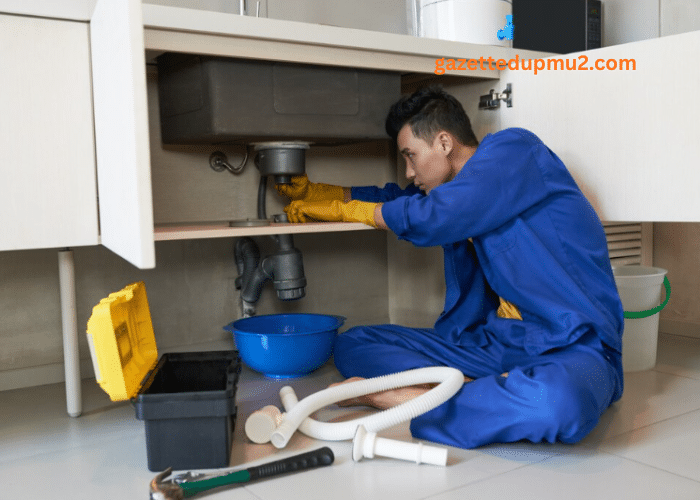Upgrading to a 48V 3000W e-bike conversion kit can transform your standard bicycle into a high-performance electric ride. These kits promise enhanced speed, power, and efficiency, making them a popular choice for cycling enthusiasts looking to elevate their experience. However, such a significant upgrade comes with important considerations.
From compatibility with your bike’s frame to understanding the power demands of a 3000W motor, there’s more to this upgrade than meets the eye. Knowing what to expect ensures a smoother installation process and a safer, more enjoyable ride. Whether you’re chasing faster commutes or off-road adventures, it’s crucial to weigh the benefits and challenges before diving in.
Why Upgrade to a 48V 3000W Conversion Kit?
Upgrading to a 48V 3000W e-bike conversion kit increases both speed and power. These kits deliver higher torque output and enable speeds of up to 50 mph, making them suitable for long-distance riding or hilly terrains. Riders seeking a performance boost often prefer these kits to enhance their cycling experience.
A 48V 3000W kit improves energy efficiency by optimizing power delivery. This is especially beneficial in scenarios requiring sustained power, such as climbing steep inclines or maintaining higher speeds over long distances. The enhanced efficiency reduces battery strain while extending its operational life when paired with a compatible system.
These conversion kits offer customizable features to meet individual riding needs. Options for different controllers and motor types let users tailor performance, ensuring the upgrade aligns with their specific riding conditions. For instance, direct-drive motors excel in high-speed applications, while gear-drive motors suit slower yet more torque-intensive rides.
Upgraded kits support heavier loads compared to lower-powered systems. This makes them ideal for carrying cargo or additional equipment without compromising performance. Moreover, they appeal to enthusiasts looking to see more advanced e-bike designs, showcasing their adaptability and utility across various applications.
Power and Speed: What to Expect from a 3000W Motor
A 3000W motor delivers significantly increased power, enabling higher performance for e-bikes upgraded with a 48V 3000W E-bike Kit. Riders can achieve speeds up to 50 mph, depending on terrain, rider weight, and bike configuration. This level of performance makes it ideal for commuting, off-road adventures, or tackling steep inclines.
High-torque output enhances the bike’s ability to accelerate quickly and handle heavy loads. Examples include transporting cargo or navigating hilly routes with ease. Riders can maintain consistent speed on various terrains due to the efficient power delivery of a 3000W motor.
Energy efficiency improves with optimized power distribution. The motor minimizes battery strain, extending the operational lifespan of both the battery and motor components. Performance adjustments, available in some kits, let users tailor speed and torque settings to suit specific needs, enhancing overall control.
Battery Requirements and Compatibility Considerations
A 48V 3000W e-bike conversion kit demands a battery capable of delivering sufficient voltage and current. The battery’s voltage must match the motor’s 48V specification for optimal performance. Using a lower voltage results in insufficient power output, while higher voltages can damage the kit’s components.
Capacity (measured in ampere-hours) determines the range. For a 3000W motor, a battery with at least 20Ah provides a more extended riding distance while supporting the motor’s high-power demand. Smaller capacity batteries may overheat or reduce longevity when subjected to continuous high-power usage.
Compatibility with the e-bike frame is vital. The battery’s size, shape, and weight should align with available mounting options on the bike. Internal frame-mounted designs are ideal for maintaining balance, but rear-rack solutions work for bikes without enough frame space.
High-discharge rates are crucial. Batteries with a continuous discharge rating of at least 60A sustain the energy-intensive requirements of a 3000W motor. Batteries with inadequate discharge capabilities risk voltage drops or potential damage during operation.
Considerations depend on the controller’s specifications to ensure seamless integration. Most 48V 3000W e-bike kits include controllers with preset configurations. Confirming voltage compatibility avoids operational inefficiencies.
Lithium-ion batteries are the preferred choice due to weight and energy density advantages. Alternatives like lithium iron phosphate (LiFePO4) offer extended cycle life but often come with higher weight and cost.
Attention to proper compatibility ensures the conversion kit performs efficiently while extending the overall lifespan of key components. For further insights, prospective buyers can See more by reviewing manufacturer recommendations for their 48V 3000W e-bike kit.
Installation Guide: Steps to Convert Your E-Bike Safely
-
Assemble Necessary Tools
Gather essential tools, including wrenches, screwdrivers, zip ties, and an Allen key set. Include a torque wrench to ensure proper tightening of bolts when securing components.
-
Remove Existing Components
Detach the bike’s rear or front wheel, depending on the motor’s placement in the kit. Remove components like the chain, derailleur, or existing hub as needed to make space for the motor installation.
-
Install the Motorized Wheel
Fit the motorized wheel from the 48V 3000W e-bike kit into the bike’s fork or rear dropout. Verify the wheel fits securely without excessive play, ensuring compatibility with the frame’s width.
-
Position the Controller
Mount the controller in a location that provides easy access and prevents exposure to water or debris. Frame tubes or rear racks are common mounting points. Use zip ties or mounting brackets for stability.
-
Connect the Wiring System
Link the motor, controller, and battery using the provided wiring harness. Follow the included wiring diagram for proper connections. Secure wires along the frame to avoid tangling or damage during rides.
-
Install the Battery
Attach the 48V battery to the frame, rear rack, or designated mount. Ensure the battery sits tightly and aligns with the 48V 3000W kit’s power demands. Check connectors for secure placement.
-
Position the Display and Throttle
Install the display on the handlebar for visible access to performance data, like speed and battery levels. Attach the throttle, either twist-grip or thumb-operated, ensuring smooth movement without obstruction.
-
Adjust and Test Fitments
Conduct a visual inspection to verify all components fit properly. Adjust brakes and derailleur settings if the motor’s placement affects their alignment. Ensure the chain is tensioned correctly.
-
Perform a System Test
Turn on the system by connecting the battery to the controller. Test the motor, throttle, and display for operational accuracy. Inspect for errors such as improper wiring or malfunctioning controls.
-
Secure Connections and Finalize Setup
Tighten bolts, secure connectors, and cover exposed wiring to prevent wear or damage. Test ride the bike to confirm the 48V 3000W E-bike Kit functions smoothly under various conditions.
These steps help ensure a safe conversion process. Properly installed kits enhance performance without risking mechanical failure.
Safety Precautions When Handling High-Power E-Bike Kits
Handling a 48V 3000W E-bike Kit requires careful attention to safety to avoid damage and injury. The kit’s high power and voltage levels demand proper precautions during installation and use.
- Wear Protective Gear: Use insulated gloves when working with electrical components to prevent shocks. Safety glasses protect eyes from debris during installation.
- Inspect Connections: Check all wiring for secure connections and intact insulation. Loose or exposed wires increase the risk of electrical shorts and fires.
- Avoid Overloading Components: The battery, controller, and motor must match the power requirements of the 48V system. Overloading can lead to overheating or component failure.
- Work in a Ventilated Area: Install and test the kit in a well-ventilated space to mitigate risks of smoke or heat. Insufficient airflow may increase heat buildup in components.
- Secure Mounts: Fix the battery, motor, and controller securely to avoid movement that could damage mounting points or compromise stability during rides.
- Follow Manufacturer Guidelines: Adhere strictly to the kit’s manual for voltage, load, and connection parameters. Improper setup may void warranties or result in unsafe operation.
Regular maintenance and inspections further ensure the long-term safety of the upgraded e-bike. Users upgrading their e-bikes should see more about specific kit recommendations to avoid potential hazards.
Impact on E-Bike Longevity and Maintenance Requirements
Upgrading to a 48V 3000W E-bike Kit increases wear on key components, including the drivetrain, wheels, and brakes, due to higher power and speed outputs. Regular maintenance becomes more critical to prevent premature failures and ensure optimal performance. Chain and sprocket wear accelerate under increased torque, necessitating frequent inspections and replacements.
Battery lifespan may decrease if not managed properly, as the higher power motor draws significant energy. Following proper charging cycles, avoiding over-discharge, and using a compatible high-capacity battery mitigate these impacts. Lithium-ion batteries, commonly used with these kits, typically last 500-1,000 charge cycles when handled correctly.
Brake systems require upgrades or consistent upkeep since stopping power must match the kit’s enhanced performance. Hydraulic disc brakes or high-performance mechanical options handle the additional stress more effectively than standard brake systems. Without these, braking efficiency reduces over time, impacting safety.
Motor longevity remains high if supported by appropriate cooling systems and routine checks for overheating or misalignment. Controllers also endure heavy loads; mounting them securely and ensuring proper wiring reduces failure risks. Cleaning electrical connections and inspecting cables for damage reduce susceptibility to environmental factors, like moisture or dust.
Periodic maintenance schedules improve overall durability. Tasks like lubricating the drivetrain, tightening bolts, and cleaning components ensure that the e-bike remains in top condition. High-power kits add functionality but demand proactive care for long-term reliability.
Legal Restrictions and Compliance Considerations
Before upgrading to a 48V 3000W e-bike conversion kit, riders should be aware of local laws and regulations governing e-bikes. High-powered kits like these may exceed legal speed or power limits in certain regions, potentially requiring registration, licensing, or insurance.
It’s essential to research and ensure compliance with local e-bike classifications to avoid fines or legal complications. Riders should also consider safety measures and responsible usage to maintain a positive experience on the road or trail.
By staying informed and adhering to regulations, users can fully enjoy the enhanced performance and versatility of their upgraded e-bike.





